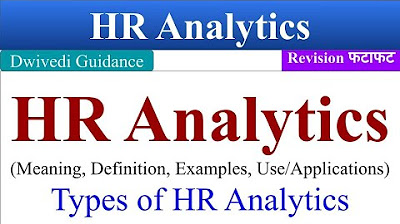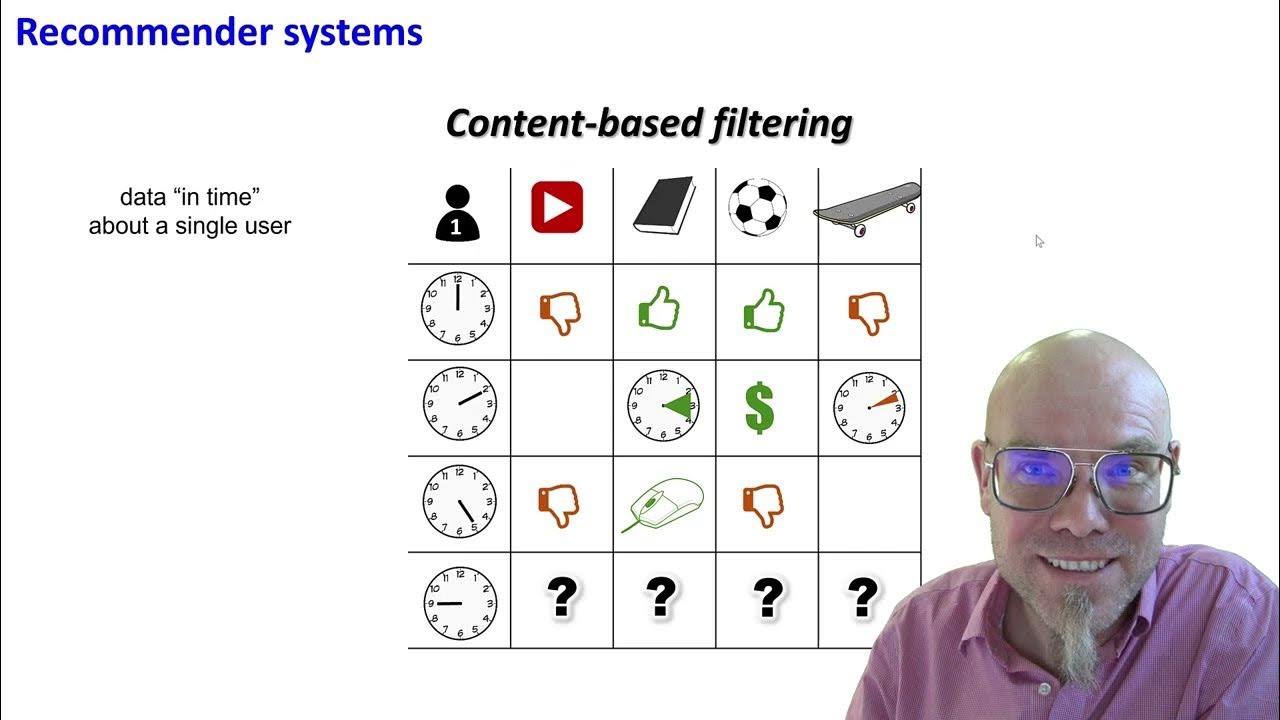Eric Siegel answers eight questions about predictive analytics
Summary
TLDRErich Segal's book 'Predictive Analytics' explores the power of predicting individual behaviors to drive organizational success. Organizations use predictive models to make decisions, enhancing sales, healthcare, crime-fighting, and even political campaigns. Segal discusses the importance of big data in creating accurate models and touches on the ethical considerations of this powerful tool. He also highlights advancements like uplift modeling and ensemble models, showcasing IBM's Watson as an example of predictive analytics in action.
Takeaways
- 📚 The book 'Predictive Analytics' by Erich Segal explores the power of predicting individual behaviors to drive organizational success.
- 🏆 Organizations across sectors like business, government, healthcare, and law enforcement use predictive analytics to make personalized decisions that reduce risk and increase efficiency.
- 👥 Two key groups benefit from predictive analytics: organizations that use it for strategic decision-making and individuals who are the subjects of these predictions.
- 🔎 Predictive analytics is not just about forecasting but also about influencing outcomes by making data-driven, individual-specific decisions.
- 📈 The more data an organization has, the better its predictive models become, as data represents the collective experience that fuels accurate predictions.
- 🌐 Big data is crucial for predictive analytics as it provides the extensive information needed to train and refine predictive models.
- 🤓 The Obama campaign's use of predictive analytics during the election is highlighted as a successful example of using individual predictions to influence voter behavior.
- 💡 Predictive analytics can reveal sensitive insights about individuals, raising important questions about privacy and the ethical use of such power.
- 🚀 Uplift modeling, a subset of predictive analytics, focuses on predicting how individuals will respond to specific treatments or interventions.
- 🤖 Ensemble models, which combine multiple predictive models, are a trending technique in predictive analytics for improving the accuracy and reliability of predictions.
- 💡 IBM's Watson, which used ensemble models and predictive analytics, successfully competed against human champions on the TV quiz show Jeopardy, demonstrating the potential of these technologies.
Q & A
What is the definition of predictive analytics according to Erich Segal?
-Predictive analytics is defined as the power to predict who will click, buy, lie, or die. It involves making per person predictions to drive decisions in various sectors such as business, government, healthcare, and law enforcement.
Who are the two kinds of people that care about predictive analytics?
-The two kinds of people who care about predictive analytics are organizations that win by making per person predictions to drive decisions, and everyone else who is being predicted upon by these organizations.
How do organizations benefit from using predictive analytics?
-Organizations benefit from predictive analytics by decreasing risk, making healthcare more robust, toughening crime-fighting, boosting sales, and gaining more votes in presidential campaigns.
What is the relationship between big data and predictive analytics?
-Big data provides the extensive experience or collective experience of an organization from which predictive models are created to make individual predictions more accurate or precise.
What is the difference between forecasting and predictive analytics?
-Forecasting predicts overall outcomes, whereas predictive analytics focuses on making per person decisions to influence individual behavior or outcomes.
How did the Obama campaign use predictive analytics differently from Nate Silver?
-While Nate Silver made forecasts for overall state outcomes, the Obama campaign used predictive analytics to make per voter decisions, focusing on persuading individual voters.
What is uplift modeling in the context of predictive analytics?
-Uplift modeling, also known as predict persuasion modeling, predicts how likely a particular treatment or campaign contact will make a positive difference for an individual, such as persuading a voter or influencing a medical treatment outcome.
What is an ensemble model in predictive analytics?
-An ensemble model is a method where multiple predictive models are grouped together to make decisions collectively, improving the accuracy and robustness of the predictions.
How did IBM's computer Watson use predictive analytics to compete on Jeopardy?
-Watson used predictive modeling and ensemble models to predict the correct answers to complex questions on Jeopardy, learning from historical data and improving its accuracy through the collective intelligence of multiple models.
What ethical considerations does predictive analytics raise?
-Predictive analytics raises ethical considerations such as privacy and civil liberties, as it can reveal sensitive insights about individuals and requires responsible use of this power.
What are some of the improvements in predictive analytics technology mentioned in the script?
-Some improvements include uplift modeling for predicting persuasion and driving decisions, and the use of ensemble models to enhance the accuracy and precision of predictive analytics.
Outlines

このセクションは有料ユーザー限定です。 アクセスするには、アップグレードをお願いします。
今すぐアップグレードMindmap

このセクションは有料ユーザー限定です。 アクセスするには、アップグレードをお願いします。
今すぐアップグレードKeywords

このセクションは有料ユーザー限定です。 アクセスするには、アップグレードをお願いします。
今すぐアップグレードHighlights

このセクションは有料ユーザー限定です。 アクセスするには、アップグレードをお願いします。
今すぐアップグレードTranscripts

このセクションは有料ユーザー限定です。 アクセスするには、アップグレードをお願いします。
今すぐアップグレード関連動画をさらに表示

Computers Can Predict When You're Going to Die… Here's How

HR Analytics, hr analytics meaning, hr analytics notes, hr analytics example, types of hr analytic

Psychopaths at work • Michael Wood • PlatformCon 2022

Introduction to Business Analytics (Updated Edition)

PERILAKU ORGANISASI PERTEMUAN KE 5

DTSC: 3.3 Prediction Machines and their recommender engines (or: what algorithms know from our past)
5.0 / 5 (0 votes)
